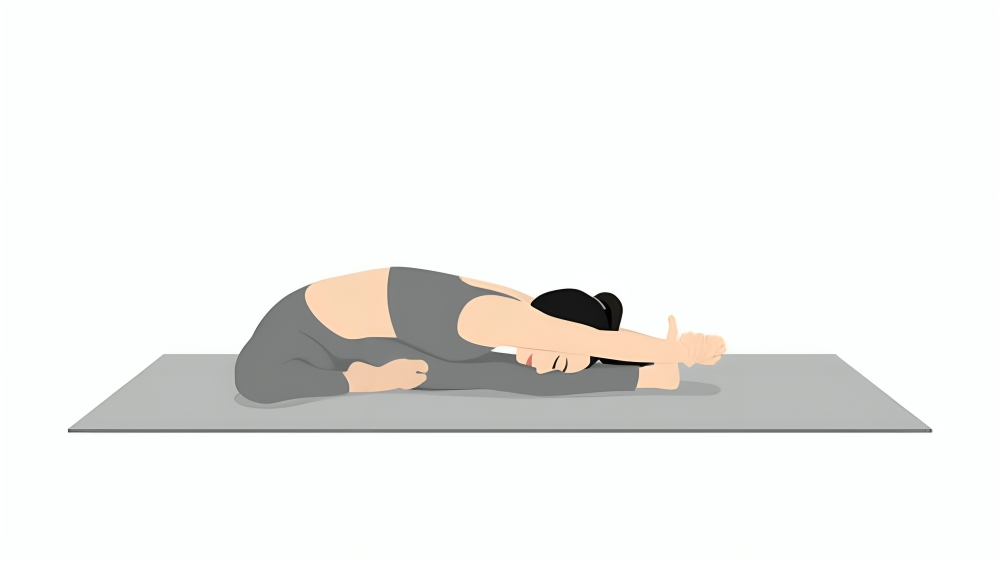
What Is Janu Sirsasana?
Janu Sirsasana, often called the Head-to-Knee Pose, is a seated yoga posture that’s both simple and effective. It’s great for stretching the hamstrings, back, and shoulders, while also promoting mental calmness.
How to Do Janu Sirsasana
Start in Dandasana (Staff Pose):
Sit on the floor with your legs extended straight in front of you. Keep your back straight, and your hands resting beside your hips.
Bend Your Right Knee:
Bend your right knee and bring the sole of your right foot to the inner left thigh. Let your right knee drop to the side, making sure it’s comfortable.
Align Your Torso:
Turn your torso slightly so that it aligns with your extended left leg. Inhale deeply as you lengthen your spine.
Reach Forward:
As you exhale, slowly fold forward from your hips, reaching your hands toward your left foot. Keep your spine as long as possible, and avoid rounding your back.
Relax and Hold:
Once you reach a comfortable stretch, relax your head and neck. If possible, rest your forehead on your knee. Hold the pose for 30 seconds to 1 minute, breathing deeply.
Come Back Up:
Inhale and slowly lift your torso back up to the starting position. Repeat the pose on the other side by switching legs.
The Benefits of Janu Sirsasana
Stretches the Hamstrings and Spine:
The pose gives a deep stretch to the hamstrings, calves, and lower back, which can be particularly helpful if you spend a lot of time sitting.
Improves Digestion:
The forward bend in this pose gently massages the abdominal organs, which can help improve digestion and relieve bloating.
Calms the Mind:
Janu Sirsasana is known for its calming effects. The gentle forward bend encourages relaxation, making it a great pose to do before bedtime.
Stimulates the Liver and Kidneys:
This pose also helps stimulate the liver and kidneys, promoting detoxification in the body.
Relieves Anxiety and Fatigue:
By calming the nervous system, Janu Sirsasana can help reduce feelings of anxiety and fatigue, leaving you feeling more relaxed and refreshed.
It’s here Parvottanasana how to do it and what are the Benefits

